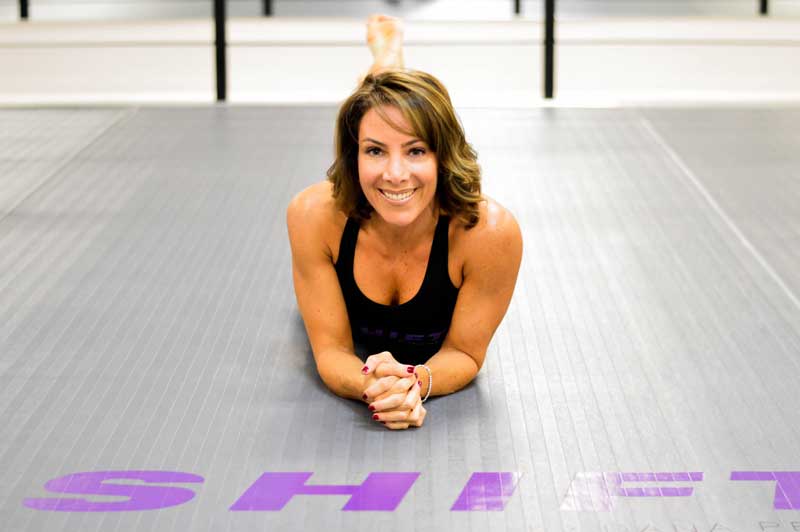What better time than springtime to kick your fitness up a notch? Longer days and warmer weather provide the perfect motivation. And you don’t have to start training for a marathon, either; as long as you’re getting more activity than you used to, you’re on the right track. Let springtime’s rejuvenation inspire you to break down those barriers and finally make fitness a way of life. It’s time to spring back into shape, but where and how should you start? Find a workout partner. While you don’t have to have a workout partner to create a successful fitness routine, there are many benefits to working out with a friend. Not only will you have an extra layer of accountability to get to the gym if your friend is waiting for you there, you may be more willing to try new types of workouts if you aren’t doing it alone.
Set realistic goals – Even if you were running 6 miles a day or deadlifting 200 pounds before the winter hibernation kicked in, chances are you’re going to need to start slow as you get back into a workout routine. Start by committing to working out 2-3 times per week. That will help you get back into the habit of making it a priority.
Choose the workout that’s best for you – When you’re just getting back to a workout routine, should you do full-body workouts or focus on one body part at a time to space things out? A lot depends on your individual goals and abilities. It also depends on how much time you have. If you’re looking to burn fat and lose weight, full-body workouts are much more efficient, particularly when using compound movements that use more than one muscle group at the same time. Full-body workouts may also mean you’ll need to spend fewer days in the gym. The most important thing is to choose a workout that you’ll actually enjoy doing.
Don’t forget to stretch! – Just as important as the workout is the cool down and stretching portion of your workout routine. Like the temptation to skip the warm-up and get straight into your workout, many people finish their workout and head straight out the door without even considering that they should stretch or otherwise cool down. A good cool down routine will help decrease soreness after a workout, which can be essential to helping you stick to your workouts.
Make sure you fuel properly – What’s the use of a good workout routine if you aren’t eating properly? If your goal is to lose weight, nutrition is an integral part of that, and poor nutrition can easily undo all your hard work in the gym. Nutrition isn’t just important if you’re trying to lose weight; it’s also important to make sure you’re eating enough and drinking enough water to safely fuel your workout. If your workouts are making you dizzy or lightheaded, you are either dehydrated or not eating enough prior to your workout. Just like fueling beforehand is important, eating for muscle recovery should also be a priority. Try to eat something with protein within an hour of your workout. This is the period during which your muscles can utilize the protein most effectively to repair and rebuild. Abs aren’t the only muscles built in the kitchen.
Don’t beat yourself up – Getting back into a workout routine isn’t easy. Even if you start slow and have a workout buddy, there may be days when you give in to the call of the couch. The worst thing you can do on these days is beat yourself up and decide that it just isn’t worth it. Give yourself a little wiggle room and cut yourself some slack, especially early on. Don’t let missing a single day take the steam out of your engine! Your body is your vehicle, so you have to keep your engine running when you work out. That means fueling up your body by eating the right foods and drinking the right fluids, in the right amounts at the right times.
Not fueling up before you work out is like “driving a car on empty”. You also won’t have enough energy to maximize your workout and you limit your ability to burn calories. Ideally, fuel up 1-2 hours before you exercise by:
-Hydrating with water.
-Eating healthy carbohydrates such as whole-grain cereals (with low-fat or skim milk), whole-wheat toast, low-fat or fat-free yogurt, whole grain pasta, brown rice, fruits and vegetables.
-Avoiding saturated fats and even a lot of healthy protein — because these types of fuels digest slower in your stomach and take away oxygen and energy-delivering blood from your muscles.
-If you only have 5-10 minutes before you exercise, eat a piece of fruit such as an apple or banana.
After your workout, refuel with:
-Fluids. Drink water, of course. Blend your water with 100% juice such as orange juice, which provides fluids, carbohydrates.
-Carbohydrates. You burn a lot of carbohydrates — the main fuel for your muscles — when you exercise. In the 20-30 minutes after your workout, your muscles can store carbohydrates and protein as energy and help in recovery.
-Protein. Eat things with protein to help repair and grow your muscles. It’s important to realize that these are general guidelines. We have different digestive systems and a lot depends on what kind of workout you’re doing.
Do what works best for you. Know that what you put in your body (nutrition) is as important as you what you do with your body (exercise). Both are crucial to keeping your engine performing at its best.

